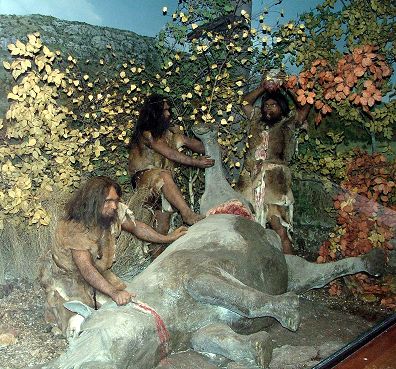
Man has been out and about in Roussillon for at least 450,000 years.
The Anglophones of today are only the latest of a long line of humans to have decided that Roussillon is a great place to live.
In July 1971 archaeologists led by Professor Henry de Lumey were excavating a cave called Caune de l’Arago near the village of Tautavel.
What they came across was extraordinary. The team unearthed the scull (face and frontal) of a man 450,000 years old, which they appropriately named the ‘Tautavel Man’.
Since then remains of over 100 other human fossils have been found which are now all visible at Tautavel Museum.
These findings have allowed archaeologists to reconstruct the life and environment of these groups of ‘homo erectus’ that occupied the area of Tautavel. This discovery also lead archaeologists to believe this was a place frequented by nomadic hunters 300,000 to 690,000 B.C.
These ‘homo erectus’ are among the oldest human remains ever discovered in Europe.
These hominids had all the characteristics of the first Europeans: a receding forehead, a roll of flesh above the eye sockets, high cheekbones and a protruding jaw.Pits of fossilized animal bones such as Elk, Bison, Rhinos, and Musk Ox were also found in the Caune de l’Arago.
This forms an excellent demonstration of the large herbivores that formed the basis of these human’s diet. It also lends a good understanding of what animals roamed the Pyrenees 500,000 years ago.
To get to the Tautavel Museum take the Autoroute A9, exit Perpignan Nord. Head towards Rivesaltes and then the D117 to Estagel and then the D9 to Tautavel.
Musée de Préhistoire de Tautavel
+33 4 68 29 07 76
contact@tautavel.com

